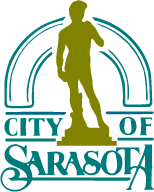A few people have asked me what exactly are the "priorities" of the City of Sarasota. I am going to post them here on my blog.
I am not going to criticize any of the objectives, but I thought it was interesting how many time the word "explore" was being used for any objective that was focused on entrepreneurship, technology or any kind of new economic development. I highlighted the objectives that are based on real estate development or retail in red.
RED = Real Estate / Tourism
YELLOW = I have no idea what these mean? They seem obtuse and "immeasurable"
GREEN = Explorations that need to be strong commitments
This why we need to email our commissioners and ask them to make Broadband, Innovation and Entrepreneurship a priority.
Measurable Objectives:
1. Palm Avenue Mixed Use Retail Space: Provide the Commission with a Staff analysis of different options for successful development of the retail space component of the Palm Avenue mixed use project. (2010)
2. Baseball Spring Training: Continue to work with Sarasota County and the Baltimore Orioles to facilitate a successful 2010 Spring Training. (2010)
3. Robert L. Taylor Community Center: Commence construction of the new Robert Taylor Center utilizing local labor force. (2010)
4. Newtown Intergovernmental Partnering: Encourage opportunities for intergovernmental cooperation in the Greater Newtown Area (including Sarasota School Board, Sarasota County and the Sarasota Housing Authority). (2010)
5. Pursue Soundstage: Explore opportunities to partner with local educational institutions and government agencies to locate a soundstage (motion picture and television theatrical production space) within the City, with emphasis along North Tamiami Trail or in North Sarasota. (2010)
6. Ad Valorem Tax Exemption: Explore the possibility of preparing a referendum with Sarasota County allowing for an acceptable level of Ad Valorem Tax Exemption for new and expanding businesses that meet an established set of criteria. (2010)
7. Relieve Developmental Impediments: Create a business friendly City Hall by identifying impediments within any of the City Departments that inhibit successful and timely development and, if found, address and improve where possible. (2010)
8. Explore Economic Development Coordinator Position: Explore the possibility of hiring an economic development coordinator to be jointly funded by the City, DID, Downtown Sarasota Alliance, and the Downtown Council of the Chamber of Commerce. Identify existing efforts being made by the City and County towards economic development. (2010)
9. Improve Administration and Community Interaction: Increase administrative interactions with the following organizations: DID, Downtown Sarasota Alliance, St. Armand‟s BID, Coalition of City Neighborhoods and the Downtown Council of the Chamber of Commerce. (2010)
10. Improved E.D.C. Outcomes: Review the role of the Sarasota County E.D.C. in terms of measurable outcomes for the City of Sarasota. (2010)
11. Public Parking: Prepare materials for the Commission to determine the future of public parking; determine if public parking should be sustained by user fees or Ad Valorem Taxes. (2010)
12. Newtown Community Partnering: Develop methods similar to the East Tampa CRA to advance leadership/ownership in greater Newtown area. (2010, 2011)
13. North Trail Improvements: Continue planning efforts of the North Trail Redevelopment Partnership using local resources to stimulate development of commercial nodes. (2010, 2011)
14. Business Incubator Program: Develop a small business incubator program to support and strengthen the small business initiatives in the Greater Newtown Community. The incubator will work in conjunction with the existing Community Entrepreneur Opportunity (CEO) program and Newtown Business and Merchant Association. (2010, 2011)
15. The Institutes for the Ages: Work with S.C.O.P.E. to encourage location of the new Institutes for the Ages within the City of Sarasota limits. (2010, 2011)
16. Wayfinding: Begin implementation of Phase 1 of the Wayfinding SRQ project. (2010, 2011)
17. Downtown Master Plan 2020: Provide suggested changes to the Downtown Master Plan Green Space Policy and make zoning code changes to strengthen Master Plan as needed. (2010, 2011)
18. Marion Anderson Site Environmental Cleanup: Complete a Brownfield Site Rehabilitation Agreement (BSRA) and remediation plan with the Florida Department of Environmental Protection (FDEP) to commence an environmental cleanup of the site (extent of cleanup depends on future anticipated use). (2011)
19. Marion Anderson Site Redevelopment Plan: Develop a written process with timelines for the development of the Marion Anderson Site that include an appreciation of current market conditions and economic challenges. (2011)
20. Sell Palm Avenue Parcel: Issue an RFP for the sale of the City‟s remaining Palm Avenue parcel. Sale might be subject to the condition that buyer builds a mid to high-end market hotel. (2011)
21. Water Tower Technology Park: Explore possibility of creating a Technology Park near Water Tower Park to stimulate North Trail development. (2011)




